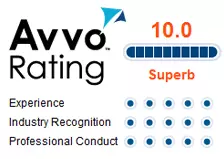Michigan’s administrative rules require that breath testing instruments (DataMaster) be “verified” for accuracy once every calendar week. In order to verify the accuracy in compliance with this rule, simulator tests are run. These simulator tests consist of a police officer mixing a solution of alcohol and water, then passing it through the machine. Logs are kept of these simulator tests.
One thing worth noting about Michigan’s system is that there is no independent verification of that the DataMaster is working properly. The only people that get to touch the machine are police officers or employees of the corporation that makes the machine, National Patent Analytical Systems (NPAS). No one from any outside agency ever comes into the various police departments to independently verify the DataMaster machines are working properly. This is like the fox guarding the hen house.
Reviewing the simulator logs reveals almost nothing about the integrity of the tests or the veracity of the logs themselves. For example, from a review of the logs alone, how can it be independently determined if the weekly simulator tests were actually run, and if they were, if the results were accurately reported. After nearly 20 years of practice as a DUI defense attorney I’ve only see an out-of-range test reported less than a half-dozen times. Are the police really so good that they almost never improperly mix the solution or improperly run the test? More pointedly, is the DataMaster really never wrong?
The answer to these questions may rhetorically come not from Michigan but instead from the state of Washington. Like Michigan, Washington also uses the DataMaster, but their quality control system is significantly different from Michigan’s. In 2007 it was determined that a Washington State Patrol employee has falsified simulator records for 1000s of drunk driving cases.
History of the Washington Case:
According to an FIC Report on Toxicology and Crime Laboratories, [O]n March 15, 2007, the Washington State Patrol’s anonymous tip line received a call which stated that the “Simulator solutions are being falsified as far as the certification.” On March 23, 2007, Dr. Logan was given a copy of the message. He then asked Ann Marie Gordon, the Toxicology Lab Manager to investigate the message.
Breath instruments used in the State of Washington are BAC DataMaster and BAC DataMaster CDM. These machines utilize a simulator solution during the initial phases of the breath test to determine whether the breath test machine is accurately measuring breath alcohol content. The external simulator solutions are prepared by the Toxicology Laboratory analysts pursuant to protocols established the State Toxicologist. The process of preparing and testing the solutions is called “certification.” No less than three analysts must certify the simulator solution prior to its certification. The practice of the Toxicology Lab was to have up to sixteen analysts certify the simulator solution, which allowed all to testify if necessary on court cases. This was believed to be less intrusive tothe lab work processes, since more analysts were available for trial testimony.
Ms. Gordon and Mr. Formosa responded in writing to Dr. Logan’s request for an investigation on April 11, 2007. They indicated that all data had been reviewed from January 2007, through March, 2007, and all was found to be accurate. Ms. Gordon later met with Dr. Logan and revealed that she had not been testing her simulator solutions and had delegated this to another analyst. Dr. Logan told her that as the manager she shouldnot be testing the simulator solutions and asked her to cease doing this.
On July 9, 2007, the Washington State Patrol’s anonymous tip line received a second call, which stated, “Ann Marie Gordon doesn’t really certify all those simulator solutions. If you look in the file you’ll find a grammetigram with her name on it, but if you also check over the years of where she really was on the days that those things were certified you’ll find once in a while she was in DC or Alaska, or somewhere else. She had somebody else do it and then she’ll sign the form that says, under penalty of perjury I analyzed this. If you don’t think that’s a big deal just think what Francisco Duarte would think of that.”
Dr. Logan met with Ms. Gordon after he received the second anonymous message and told her that an investigation would be begun on this matter. Ms. Gordon indicated that there was no need for an investigation since she had signed the documents. She stated that Mr. Formosa had done her testing and she then signed the certification forms. Dr. Logan initiated an internal affairs investigation and Ms. Gordon subsequently resigned on July 20, 2007.
The problems associated with Ann Marie Gordon’s false certifications and also the errors in the database and computations culminated in a number of court decisions relating to the admissibility of the breath test results in DUI prosecutions.
- In Arntson v. Department of Licensing, [DOL case] the court admitted the breath test results, but gave them no weight due to the problems associated with the actions of Ms. Gordon and the culmination of errors dealing with the simulator solution. The action to suspend Mr. Arntson’s driving privileges was dismissed.
- In State v. Gilbert, et al [Skagit County cases], the court denied the motions to dismiss the charges or suppress the breath test results, but was very critical of the Toxicology Laboratory and Dr. Logan.
- In State v. Lang, et al, [Snohomish County cases] the motion to suppress the breath test result was granted due to Ms. Gordon’s actions.
- In State v. Ahmach, et al, [Redmond cases] the court granted the motion to suppress due to Ann Marie Gordon’s actions, and the errors committed by the lab personnel. The case was very critical of the Toxicology Laboratory and Dr. Logan’s supervision.
Ahmach in particular is interesting because the court found that simulator tests outside the allowable range were systematically excluded. Thus, it would be impossible for anyone to know that the simulator solutions were falling outside the allowable range. The accuracy checks run from these solutions would of course be meaningless. According to the court order there were nearly fifteen thousand tests run on the affected machines.
Despite the fact that thousands of Washington citizens were potentially convicted of drunk driving based on faulty breath test evidence all because of Ms. Gordon, she was not prosecuted. One is left to wonder – why? This is what Georgia’s top DUI defense attorney, William “Bubba” Head had to say about this debacle:
The Saga of Ann Marie Gordon points out how far the Government will bend over backward to protect State witnesses EVEN WHEN they INTENTIONALLY lie. Assume that each DUI case had a per case “cost” of $400 per case in terms of police and dispatch personnel, law enforcement equipment, court clerk time, prosecution resources, judge assignment time, etc. Assume only 1000 breath test cases were “flushed” due to Gordon’s error.
$400,000 LOST? Hell, a lady from Georgia Tech (a state supported college) who misused a credit card for less $$$$ recently received a sentence of 10 years to serve (the judge initially said 20 years).
Ann Marie Gordon and others like her are EXACTLY why we must REMOVE forensic testing from the hands of State crime labs. The “advocacy” role being played within the Crime Labs is so one-sided that to claim anything but the fact that Crime Lab workers are staunchly pro-prosecution is a blatant lie. Can you imagine trying to “plow with the State’s mule” in presenting a DEFENSE case involving candida albicans or a retrograde extrapolation calculation? The crime lab witness would TORPEDO your case, plain and simple.
“No public harm”? What about all those people who pleaded GUILTY and went to JAIL based on indisputably FLAWED breath test certifications? Do they not have a possible CLASS ACTION, even if the State of Washington is such a WIMP and so PRO-PROSECUTION that they ignore this clearly provable CRIME?
It is our opinion that when it comes to determining “public harm,” defense attorneys and their clients look at things differently than others involved in the system. From the state’s perspective, at least insofar many prosecutors and judges are concerned, public harm only occurs when the guilty fail to be convicted, not the other way around. This is especially true in a drunk driving case.
Considering the way the simulator tests are run in Michigan one is left to wonder if there aren’t similar or even worse problems as those that occurred in Washington. Until any anonymous calls are investigated with integrity, we may never know. Yet if problems like these are occurring, then it stands to reason that each year thousands of Michigan’s citizens are also being wrongfully convicted of drunk driving.
Related posts:
- Find Michigan DUI Lawyer | Fraudulent Breath Tests Lead to As Many as 4000 Wrongful Drunk Driving Convictions
- Prosecution of Thousands of Drunk Driving Cases Imperiled
- Thousands of Breath Tests Improperly Admitted in Michigan DUI Trials
- Blood Tests in DUI Cases Not Always Accurate
- Michigan’s Mobile Breath Testing Van Busts Drunk Drivers



